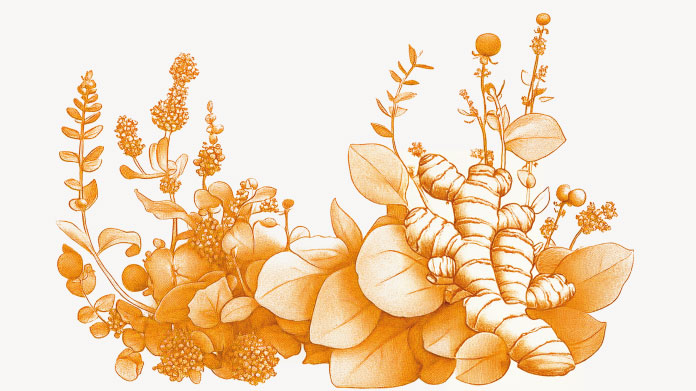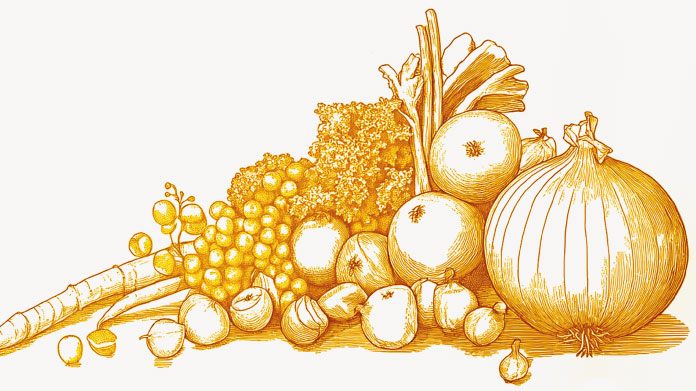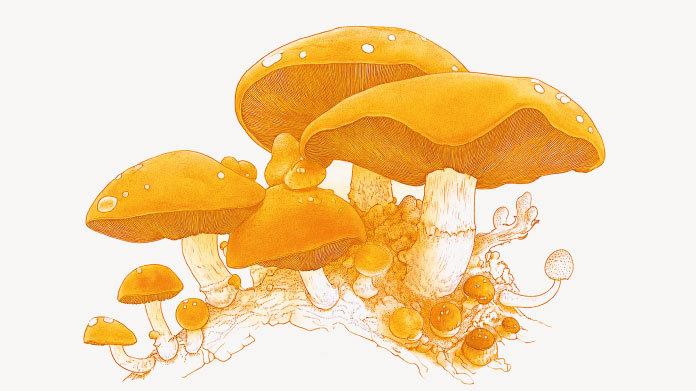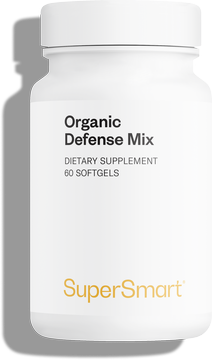Immunity : 5 excellent plants for the immune system
Can you name 5 plants that help support the body’s defenses? If the answer is no, get up to speed now with our list of plants known to benefit the immune system.
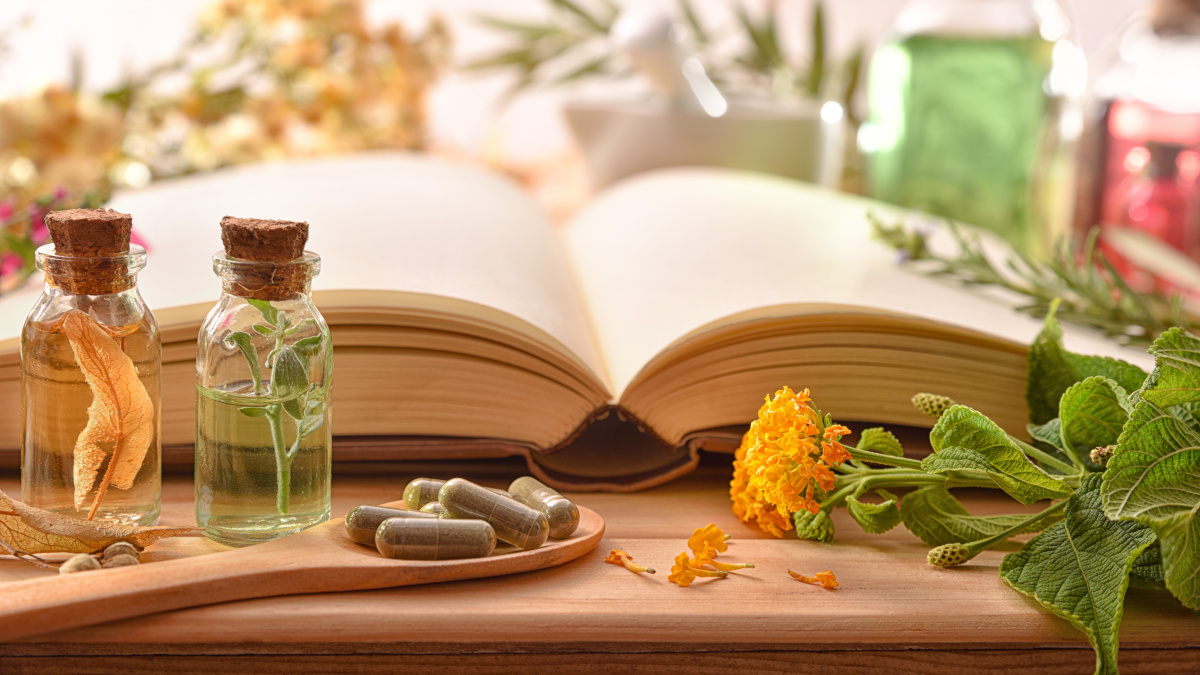
1) Astragalus plays a role in the body’s defenses
A potent medicinal plant from the Fabaceae family, astragalus is a large genus of many different species. Specifically, it is the Astragalus membranaceus variety which has been used for thousands of years in traditional Chinese medicine... and is still used today in its modern equivalent.
Rich in polysaccharides, saponins and flavonoids, this particular variety of astragalus directly supports immune health. It plays a role in:
- defending the body against external aggressors;
- maintaining physical and mental strength ;
- protecting cells and tissues against free radicals ;
- maintaining normal blood pressure and a healthy microvascular system (1-3).
The extraordinary properties of Astragalus membranaceus have earned it the name ‘huang qi’ in Chinese, which means ‘booster of energy flow’.
This plant is usually consumed as a herbal tea, soup or dietary supplement (such as Astragalus Extract).
2) Cat’s claw and immunity
Cat’s claw, or Uncaria tomentosa to give it its scientific name, is a species of liana native to Peru. Its name comes from the small, curved claw-like stipules at the base of its leaves. Used for more than 2000 years, this plant is considered sacred by many Amazon rainforest peoples such as the Ashaninka and Campo.
Cat’s claw contains multiple alkaloids, triterpene glycosides, flavonoids, tannins... which are responsible for its benefits. The plant is known for its ability to support the immune system (4-6).
Since the 1990s, this Peruvian vine has continued to grow in popularity in Europe and North America.
If you’d like to benefit from the virtues of this jungle plant , one option is to prepare a decoction from the dried inner bark of cat’s claw, which has first been reduced to a powder. Alternatively, to prevent any possibility of dosage errors, you could take a cat’s claw supplement, in the form of pre-dosed capsules (such as AC-11®).
3) The effect of ginseng on the immune system and vitality
Part of the Araliaceae family, ginseng (or Panax ginseng) is the fundamental medicinal plant of traditional Asian medicine. The significant effects of ginseng root, which can sometimes resemble the shape of a man, were particularly prized by Chinese emperors.
Ginseng contains a sizeable amount of ginsenosides (also known as ‘panaxosides’), triterpenoids, polysaccharides, vitamins... As a result, it helps to:
- support the immune system;
- maintain good cognitive performance ;
- maintain good sexual activity;
- maintain vitality and prevent fatigue (7-9).
With its many virtues, it is often referred to as the ‘root of long life’. To benefit from its effects on immunity, you can take a course of dietary supplements with a high content of active ingredient , such as Ginseng 30% (standardized to 30% ginsenosides).
It is advisable to take ginseng in the morning
4) Echinacea for the defense system and upper respiratory tract
Echinacea hails neither from the Peruvian jungle nor China. This pink-flowered plant, which belongs to the Asteraceae family, first emerged in North America. It is the Echinacea purpurea species, in particular, which is used for medicinal purposes. It was even considered by Native Americans to be their most significant plant.
Echinacea purpurea is abundant in alkylamides, phenolic compounds, and alkaloids... A biological treasure trove, it thus supports:
- normal function of the natural defense system ;
- a healthy upper respiratory tract (helping to soothe sore mouths and throats, conferring a pleasant effect in the throat and vocal cords...) ;
- a healthy lower urinary tract(10-12).
How should echinacea be consumed? You have the option of either herbal teas, standardized solid extracts or nutritional supplements (such as Immunity Booster, a synergistic formulation which combines echinacea, beta-glucans, vitamin C and zinc).
5) The benefits of turmeric for the immune system
The last plant on this (by no means exhaustive) list, turmeric is well-known as a key ingredient in the blend of Indian spices used in various curries. In Europe too, references to turmeric date back to ancient times, but it was only in the 18th century that it began to be imported on a large scale.
Like ginseng, it is the plant’s root (or rhizome) which is generally used in cooking and in naturopathy.
Many of turmeric’s benefits come from the compound curcumin, a polyphenol pigment which is also responsible for the plant’s yellow-orange color. This exceptionally powerful plant helps to:
- maintain immune system efficacy and resistance to allergies ;
- support nervous system function;
- maintain good liver health ;
- support healthycirculation ;
- and maintain healthy skin(13-15).
While you can consume turmeric root fresh (or in powdered form), you can also significantly increase your intake by taking a turmeric extract with a high curcuminoid content (such as Natural Curcuma, which is particularly rich in curcumin and other beneficial curcuminoids).
References
- Qin Q, Niu J, Wang Z, Xu W, Qiao Z, Gu Y. Astragalus embranaceus extract activates immune response in macrophages via heparanase. Molecules. 2012;17(6):7232-7240. Published 2012 Jun 13. doi:10.3390/molecules17067232
- Li ZX, Zhao GD, Xiong W, et al. Immunomodulatory effects of a new whole ingredients extract from Astragalus: a combined evaluation on chemistry and pharmacology. Chin Med. 2019;14:12. Published 2019 Mar 27. doi:10.1186/s13020-019-0234-0
- EFSA Register of Questions - Europa EU
- Domingues A, Sartori A, Valente LM, Golim MA, Siani AC, Viero RM. Uncaria tomentosa aqueous-ethanol extract triggers an immunomodulation toward a Th2 cytokine profile. Phytother Res. 2011 Aug;25(8):1229-35. doi: 10.1002/ptr.3549. Epub 2011 Jun 8. PMID: 21656603.
- Yunis-Aguinaga J, Claudiano GS, Marcusso PF, Manrique WG, de Moraes JR, de Moraes FR, Fernandes JB. Uncaria tomentosa increases growth and immune activity in Oreochromis niloticus challenged with Streptococcus agalactiae. Fish Shellfish Immunol. 2015 Nov;47(1):630-8. doi: 10.1016/j.fsi.2015.09.051. Epub 2015 Oct 3. PMID: 26434713.
- EFSA Register of Questions - Europa EU
- Kang S, Min H. Ginseng, the 'Immunity Boost': The Effects of Panax ginseng on Immune System. J Ginseng Res. 2012 Oct;36(4):354-68. doi: 10.5142/jgr.2012.36.4.354. PMID: 23717137; PMCID: PMC3659612.
- Saba E, Lee YY, Kim M, Kim SH, Hong SB, Rhee MH. A comparative study on immune-stimulatory and antioxidant activities of various types of ginseng extracts in murine and rodent models. J Ginseng Res. 2018;42(4):577-584. doi:10.1016/j.jgr.2018.07.004
- EFSA Register of Questions - Europa EU
- Manayi A, Vazirian M, Saeidnia S. Echinacea purpurea: Pharmacology, phytochemistry and analysis methods. Pharmacogn Rev. 2015;9(17):63-72. doi:10.4103/0973-7847.156353
- Zhai Z, Liu Y, Wu L, Senchina DS, Wurtele ES, Murphy PA, Kohut ML, Cunnick JE. Enhancement of innate and adaptive immune functions by multiple Echinacea species. J Med Food. 2007 Sep;10(3):423-34. doi: 10.1089/jmf.2006.257. PMID: 17887935; PMCID: PMC2362099.
- EFSA Register of Questions - Europa EU
- Chandrasekaran CV, Sundarajan K, Edwin JR, Gururaja GM, Mundkinajeddu D, Agarwal A. Immune-stimulatory and anti-inflammatory activities of Curcuma longa extract and its polysaccharide fraction. Pharmacognosy Res. 2013;5(2):71-79. doi:10.4103/0974-8490.110527
- Jagetia GC, Aggarwal BB. "Spicing up" of the immune system by curcumin. J Clin Immunol. 2007 Jan;27(1):19-35. doi: 10.1007/s10875-006-9066-7. Epub 2007 Jan 9. PMID: 17211725.
- EFSA Register of Questions - Europa EU
Keywords
-46
Ordering was easy and the product was…
Ordering was easy and the product was delivered with no problems. Appreciated that I was notified when it would arrive. Thanks!
MascarC
5 Days
Great customer service - responsive …
I ordered from them and my item was unavailable for sometime. I was super happy when they reactivated my order and shipped my item which arrived very quickly. Great customer service.
Ruth Rueter
6 Days
Super fast shipping
Super fast shipping
Donald Borling
9 Days
Reputable companysearch and the number of…
The research and the number of selection of products.
NAKHJAVAN Shervin
22 Days
The Anti Aromatase is a great product
The Anti Aromatase is a great product. You just need to have constant inventory. Recently this product has been out of stock.
GEORGE Verne
24 Days
Great help on chat
Great help on chat. Knowledgeable and friendly.
Jason Argos
27 Days
Customer service was fast and friendly.
Customer service helped to stop the transaction process of the subscription. I appreciated that.
Greenie
27 Days
I order here due to the high quality of…
I order here due to the high quality of the products and the quick delivery of items - thank you
Barbara J
29 Days
SuperSmart's Eye Pressure supplements: highly recommended!
I purchase SuperSmart's Eye Pressure supplements regularly for over 5 years, and gotta say they are truly a wonderful product for my Glaucoma. Highly recommended if you have eye pain from your Glaucoma.
D. Martinez
33 Days
Quick service
Quick service
MONELL
34 Days
Speedy service.
Speedy service.
ROSENTHAL Marvin
38 Days
Clear website- Efficient
Clear website. Excellent search engine and fast delivery!
Mohamad Hussein
40 Days
They have great products.
They have great products.
Vickie
40 Days
Great Shipping Time!
You Have A Great Shipping Time! Praise The Lord!
DMHoge
42 Days
Doctor Recommended!
Good pricing, very good availability, doctor recommended (couldn't find what I needed anywhere else), and it took only a week to arrive (which I can't complain about).
Al

